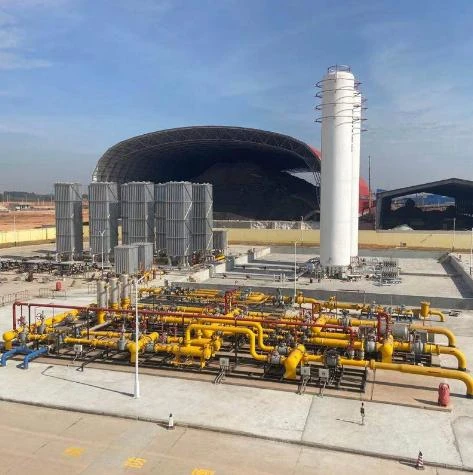
Jan . 01, 2025 11:36
Back to list
Understanding the Functionality and Benefits of Pressure Regulation Devices in Systems
Understanding Pressure Reducers An Essential Component in Fluid Systems
Pressure reducers play a crucial role in various applications ranging from industrial processes to household systems. These devices regulate and control the pressure of fluids, ensuring that they remain within safe and operational limits. Understanding how pressure reducers work, their types, applications, and benefits is essential for anyone involved in fluid management.
What is a Pressure Reducer?
A pressure reducer, also known as a pressure regulator, is a mechanical device designed to decrease and stabilize the pressure of a fluid. The main function of a pressure reducer is to transform a high inlet pressure into a lower, stable outlet pressure, thereby preventing potential hazards that could arise from operating equipment at excessive pressures. This regulation ensures that systems operate efficiently and safely.
How Do Pressure Reducers Work?
The operational mechanism of a pressure reducer involves a spring-loaded diaphragm or a similar component. When high-pressure fluid enters the device, it exerts force on the diaphragm. The diaphragm then moves against the tension of the spring, allowing for a regulated amount of fluid to pass through at a predetermined pressure. If the downstream pressure fluctuates, the device automatically adjusts by either opening or closing the flow path, maintaining a constant outlet pressure.
Types of Pressure Reducers
There are several types of pressure reducers, each suited for different applications
1. Single-stage Pressure Reducers These are typically used in applications where the inlet pressure is not excessively high. They provide a straightforward pressure reduction with minimal components.
2. Two-stage Pressure Reducers These devices are ideal for high-pressure systems. They use two stages of regulation to achieve precise control and are often deployed in gas supply systems.
3. Adjustable Pressure Reducers Some pressure reducers come with adjustable settings, allowing users to modify the outlet pressure based on their specific needs.
4. Back-pressure Regulators Unlike standard pressure reducers, back-pressure regulators maintain a set pressure upstream of the device, providing another layer of system control.
Applications of Pressure Reducers
pressure reducer

Pressure reducers are widely used across various industries and applications
- Gas Distribution Systems In natural gas and propane systems, pressure reducers ensure that gas is supplied safely to appliances at the correct pressure.
- Hydraulic Systems These systems often require precise pressure control to function effectively, making pressure reducers a key component in equipment like presses and lifts.
- Water Supply Systems Municipal water systems utilize pressure reducers to ensure that water is distributed at safe and usable pressures for residential and commercial buildings.
- Industrial Equipment Many industrial processes require specific pressure settings to operate machinery effectively, and pressure reducers are essential for maintaining these conditions.
Benefits of Using Pressure Reducers
The benefits of incorporating pressure reducers into fluid systems are numerous
1. Safety By controlling and reducing pressure, these devices help prevent accidents and equipment damage caused by overpressure.
2. Efficiency Proper pressure regulation ensures that systems operate efficiently, which can save energy and reduce operating costs.
3. Longevity of Equipment By minimizing pressure fluctuations, pressure reducers help extend the lifespan of connected machinery and components.
4. Flexibility With adjustable options available, users can easily modify operating pressures as needed.
Conclusion
In summary, pressure reducers are vital components in the management of fluid systems. They enhance safety, improve efficiency, and prolong the life of equipment across various applications. Understanding their functioning and significance encourages better practices in fluid management, paving the way for safer and more efficient operations.
Latest news
-
Safety Valve Spring-Loaded Design Overpressure ProtectionNewsJul.25,2025
-
Precision Voltage Regulator AC5 Accuracy Grade PerformanceNewsJul.25,2025
-
Natural Gas Pressure Regulating Skid Industrial Pipeline ApplicationsNewsJul.25,2025
-
Natural Gas Filter Stainless Steel Mesh Element DesignNewsJul.25,2025
-
Gas Pressure Regulator Valve Direct-Acting Spring-Loaded DesignNewsJul.25,2025
-
Decompression Equipment Multi-Stage Heat Exchange System DesignNewsJul.25,2025

